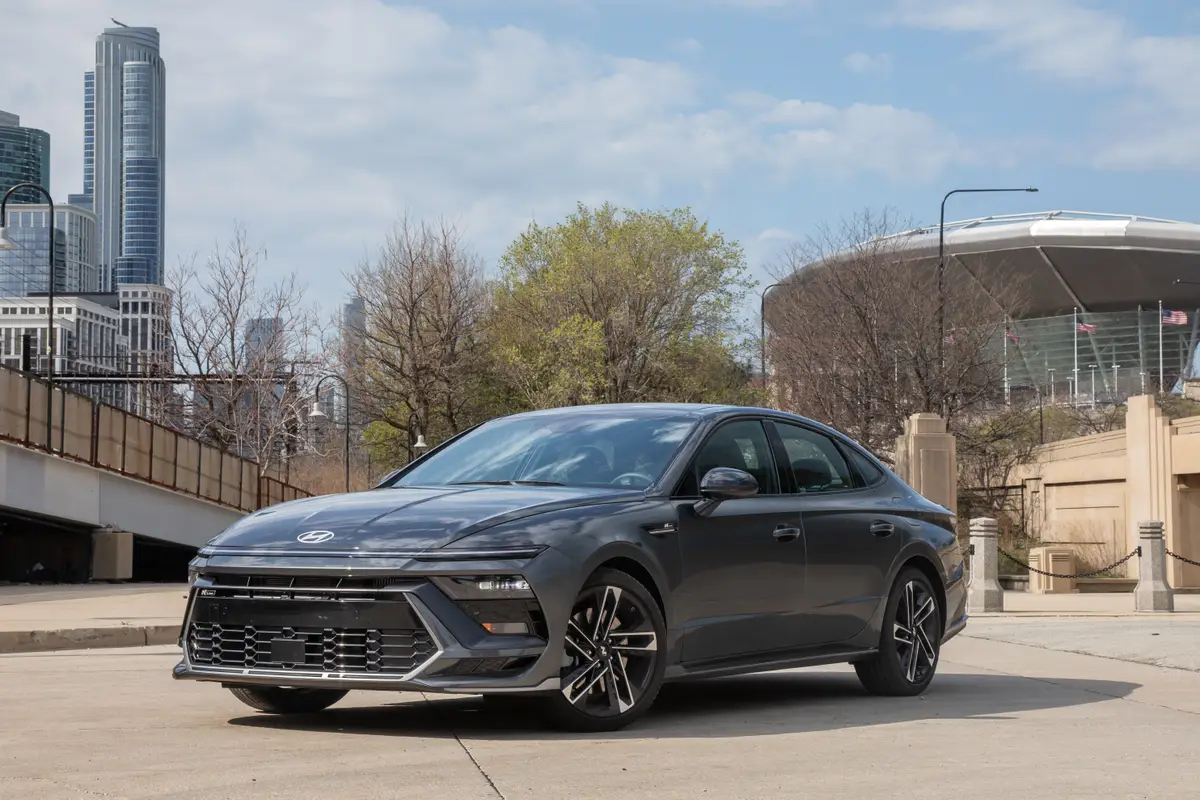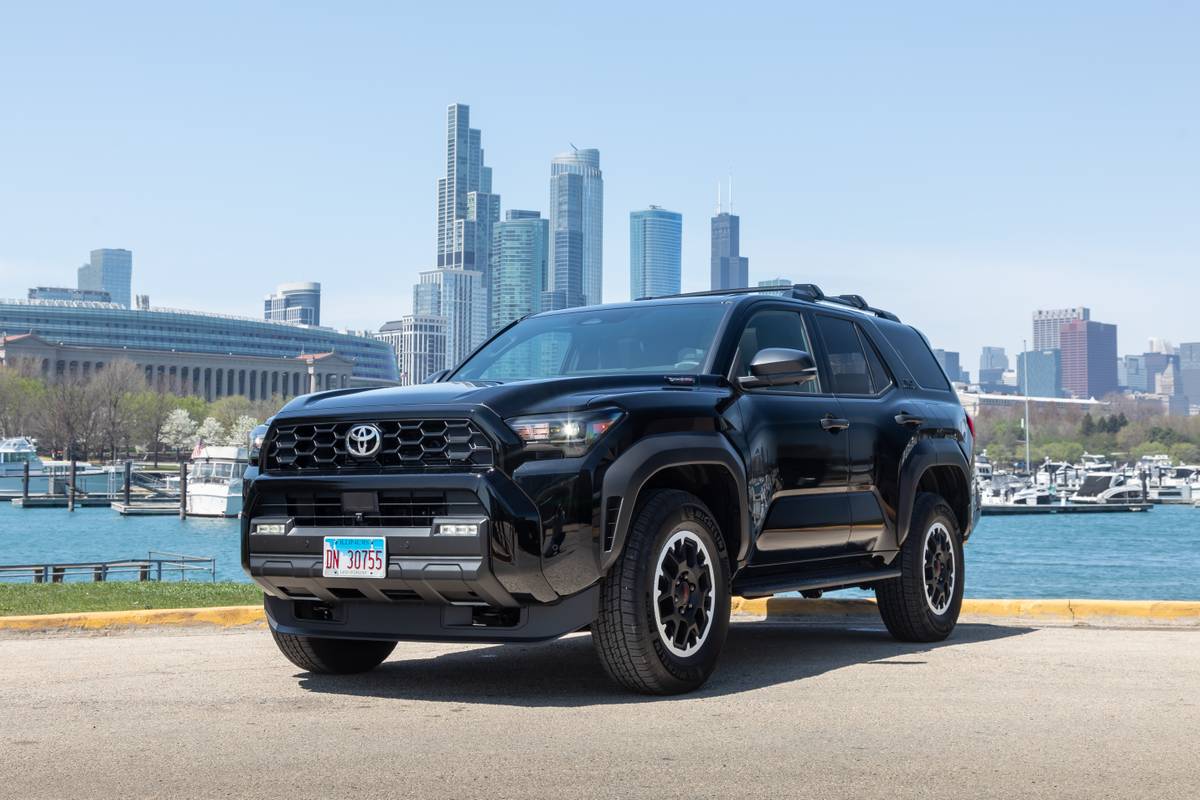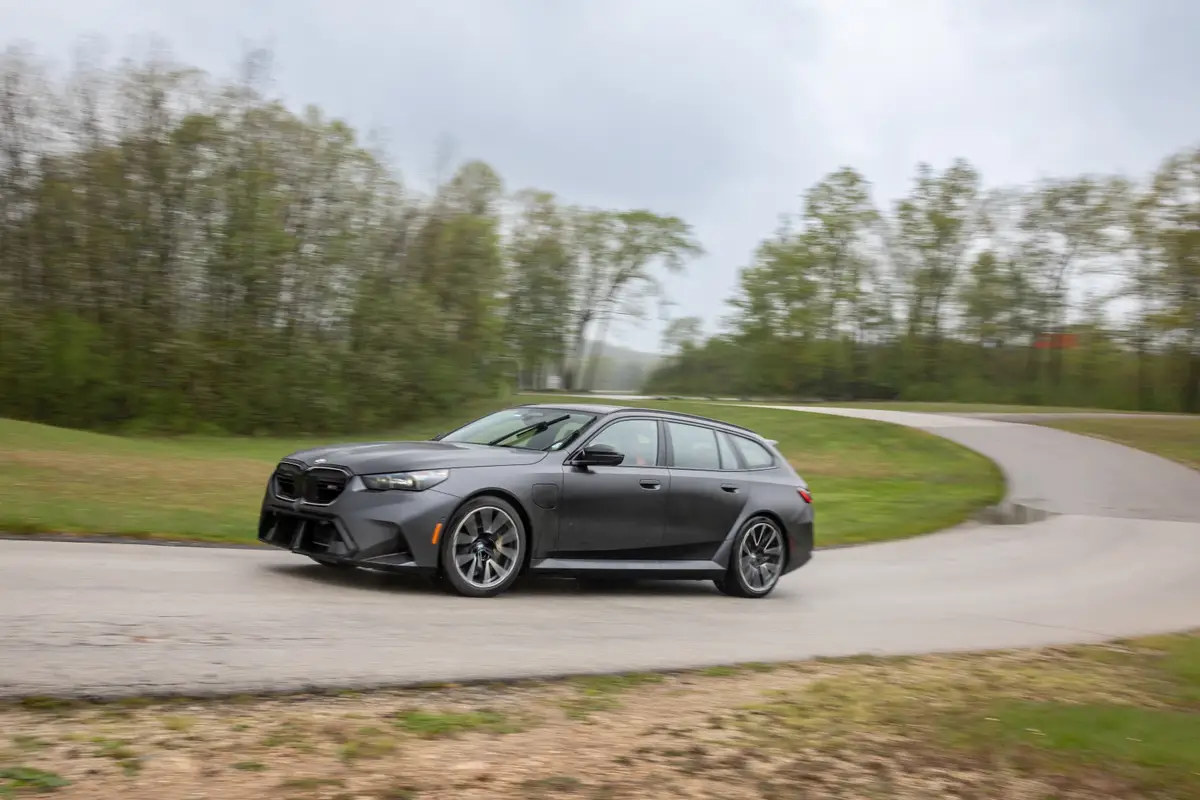Racer Ryan Millen Talks Pickup Trucks, Rally Racing
A Toyota RAV4 wouldn't be our top choice to tackle a rally track (or be in our top 50 choices to be frank), but Toyota wants to prove the capability of its family-oriented compact SUV and change perceptions. So after a day of driving, that's how I came to be strapped into Ryan Millen's modified RAV4 getting hustled around the dirt at speeds I did not know were possible in a RAV4 with a stock engine and transmission.
If Millen's name sounds familiar, that's understandable — he comes from a racing family. He is the son of Rod Millen, who held the record at the Pikes Peak International Hill Climb for many years and was a legendary rally driver in his own right. His brother, Rhys, races in the Global Rallycross series for Hyundai and set an electric-vehicle record at Pikes Peak this year.
Ryan Millen himself is no slouch either — he won the 2014 Baja 1000 full stock class with a Toyota Tundra TRD Pro. This year, he and co-driver Christina Fate (who also is his fianc‚) are tied for first in Rally America's two-wheel drive division after five of this season's eight races.
We had the chance to sit down with Millen and get his thoughts on pickup trucks, rally racing and why he chose to use a RAV4 (of all things) for competition. At the end of our chat, he declared that "deep down, I love trucks," which makes him a man after our own heart. Here's what he had to say.
PickupTrucks.com:So have you driven both of the Toyota TRD Pro pickup trucks?
RM: Andy Bell [with whom Millen won the Baja 1000] and I went to Chile in the TRD Pro Tundra and Alaska in the TRD Pro Tacoma last November. We climbed a bunch of volcanoes in Chile, which was a blast, and in Alaska we went to Deadhorse, which is the furthest north point. And we went in November and it was minus-40 and insane.
PUTC:Do you prefer one over the other?
RM: They're such different trucks. I need the towing ability, so that's why I purchased the Tundra. The Tacoma is such a perfect size for me, living in Southern California. It's a little tough; I love having 380 horsepower and I love having that V-8. But I would love to have smaller as well.
PUTC:I think I agree with you. The V-8 in the Tundra is the much better engine, but the Tacoma has a bit more technology that makes it accessible.
RM: That's what I like about Tacoma; I love the multiterrain select and I love the diff-lockers. And I really like crawl control.
PUTC: You started out desert racing. What made you want to switch from desert to rally?
RM: My dad is known for rallying; my brother rallied for many years. And it was kind of one of those opportunities I grabbed and took. And it's been such a fun experience, it really has.
PUTC:This was second year running with the RAV4?
RM: Last year was kind of like a discovering year. Just like everyone here [in the Rally America series] has apprehension about the RAV4. Even Toyota was like "Really, you wanna do that?" And I said, "No, seriously, we could do that — it's gonna be competitive!"
(Editor's note: This season is Millen and Fate's second season with the RAV4. The pair ran several rallies on the West Coast as a trial in 2015. This is the RAV4's first full year in Rally America.)
So we just did a few rallies on the West Coast here, six or seven. Just kinda got a feel for it, made sure it was OK. Then it was like "OK, let's do the national championship" and we still got apprehension from some of the executives because Toyota doesn't enter racing to be not competitive — they enter to win. And to do that with a production car … we're looking at power-to-weight ratios, other cars are much lighter and [have] more horsepower. The writing on the wall says you can't win. The others are turbocharged, sequential gearboxes with six gears, where we technically have a six-speed automatic but two of those gears are made for fuel economy — so we don't use those gears.
But that's what's so neat about rallying — you can do that. You can elevate a car; there's so many more elements to it. Power-to-weight ratio doesn't matter when the road gets rough. This car has the wheel travel and the suspension and reliability' you can't measure that.
PUTC:Is that why you leave certain things stock as well? Not just to say "these are stock" but for reliability?
RM: Yes, the season doesn't allow for us to test much. We're allowed to test but the time frame doesn't allow it. We're based out of Southern California, which is pretty much the furthest you could go — our closest event is all the way up in Washington. So it's about a week back, a week out, we have two weeks to prep the car and we don't quite get enough time to test. The season starts in January and ends in October, and there's not a lot of development time. So sometimes you don't want to compromise that reliability.
I see guys make performance changes that they think are going to make them go faster, but it goes and stresses something else. They go build a great engine, don't change the transmission and start breaking axles or transmission pieces. There's so much to it. And that's what I stress on my guys too — the engineering's been done on this car, let's not mess with it, you know?
PUTC:And Toyota's research and development budget is much larger than your team's, than any team.
RM: Right, Toyota does very stringent testing on it, you know like basic stuff. They have rules when they design things. I talked to some of the chief engineers and they talk about certain things like with Tundra. I remember Mike Sweers, a good friend of mine who was a chief engineer, and he would say "I don't know why we have this rule that certain things are heat treated and I cannot get them to change that. We have to do it no matter what. I know it's way too strong, but that's the Toyota way." The most important thing when I look for a vehicle is reliability. I don't really care so much about styling or performance. I don't want to work on my tow rig after I've been working on my race car.
Manufacturer Images and Cars.com photos by Brian Wong

Featured stories

2025 Hyundai Sonata N Line Review: Banish Boring




